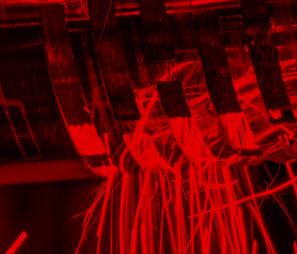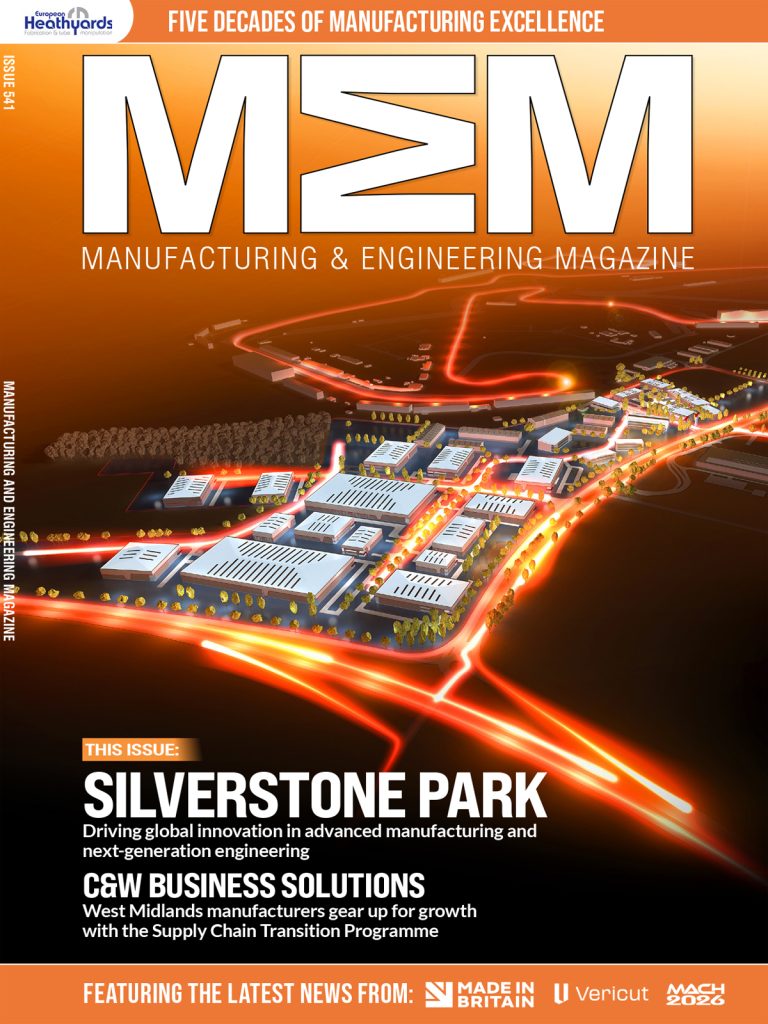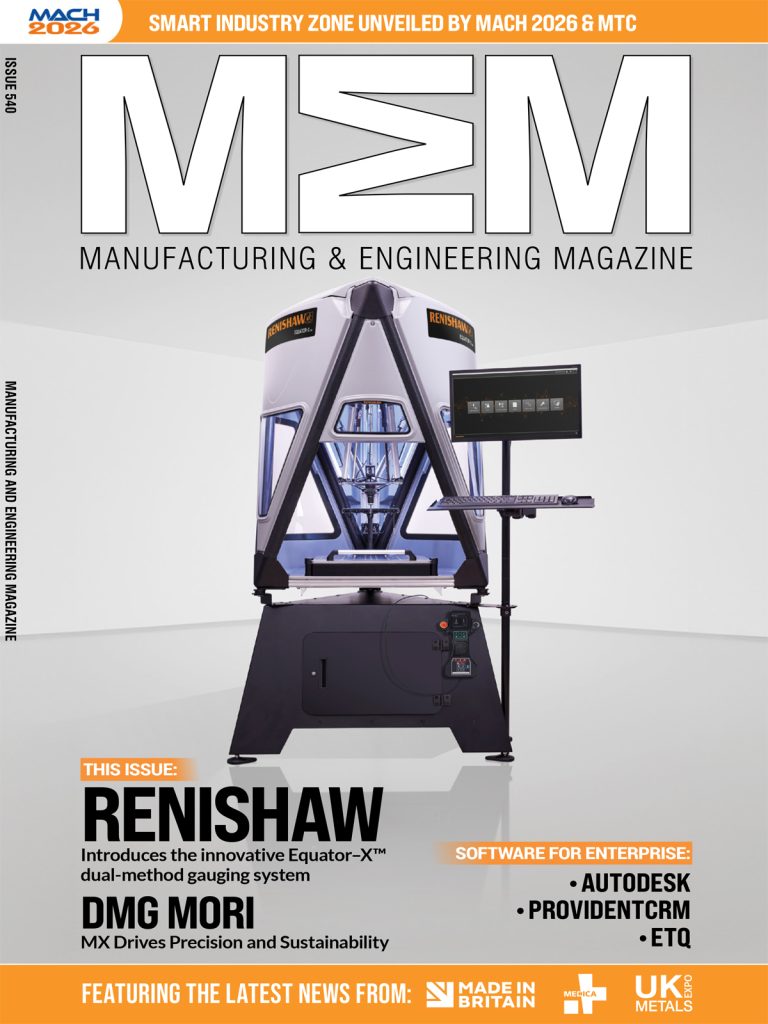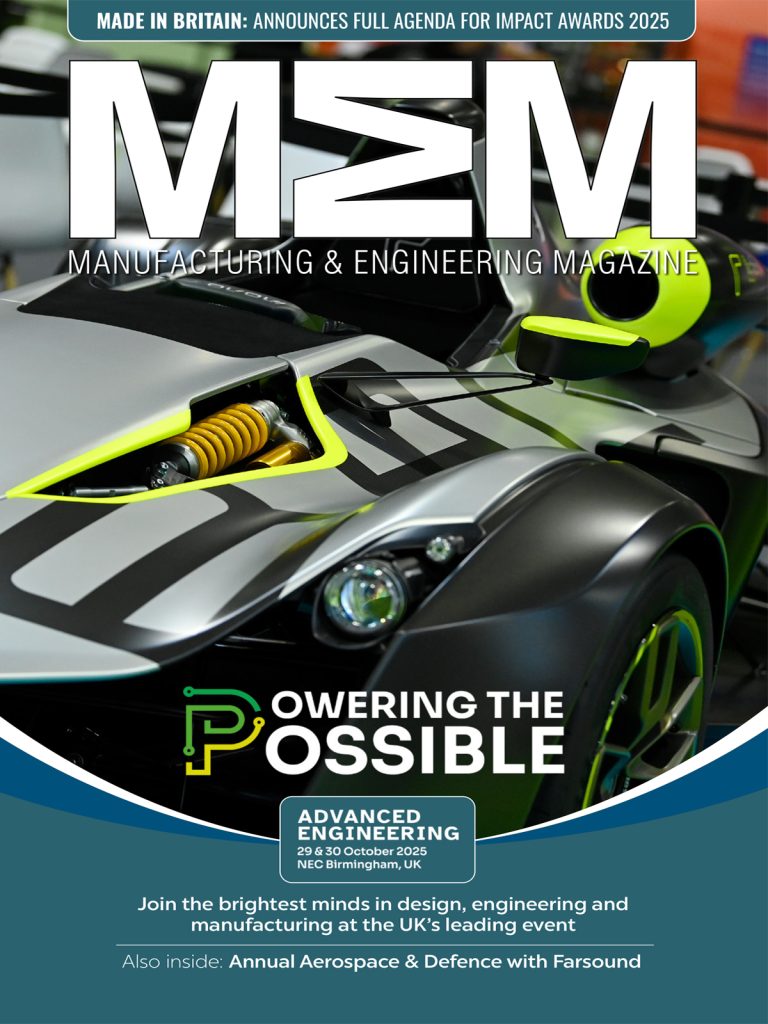The UK Government’s plans to phase out new petrol and diesel cars by 2030 means that we’re seeing a huge shift towards the electrification of vehicles. Key to this transition is the adoption of composite materials in the design and manufacturing process, which help produce lighter vehicles, thereby improving their efficiency and range. Here Simon Farnfield, event director at leading engineering and manufacturing exhibition, Advanced Engineering UK, which is set to return to the NEC, Birmingham, on October 29 and 30, explores the role of composites in lightweighting.
Electric vehicles (EVs) face unique challenges compared to internal combustion engine (ICE) vehicles, primarily due to the substantial weight of battery packs required to achieve competitive ranges. A heavier vehicle demands more energy to operate, which can diminish the vehicle’s range and performance. Therefore, reducing the overall weight of EVs is crucial to offset the battery mass and improve efficiency. Studies have shown that a ten per cent reduction in vehicle weight can lead to a six to eight per cent improvement in energy consumption, highlighting the impact of lightweighting.
Composite materials, particularly fibre-reinforced polymers (FRPs) such as carbon fibre and glass fibre composites, offer a great strength-to-weight ratio. This makes them ideal for automotive applications where reducing weight without compromising structural integrity is key. Incorporating composites into vehicle design allows manufacturers to produce lighter components, which is especially beneficial for enhancing the range and performance of EVs.
The versatility of composite materials means that they can be used in various aspects of EV construction, helping to address weight, safety and efficiency challenges. By incorporating composites, manufacturers can produce lighter, stronger and more sustainable vehicles.
Structural components
Composites are increasingly being used in the chassis, body panels and crash structures of EVs. Traditional automotive structures rely heavily on steel and aluminium, but advanced fibre-reinforced composites, such as carbon fibre-reinforced polymer (CFRP) and glass fibre-reinforced polymer (GFRP), offer a superior strength-to-weight ratio. A composite chassis can weigh up to 50 per cent less than a conventional steel chassis, improving vehicle efficiency and extending battery range.
Composites also absorb energy more efficiently in a crash, offering better protection for passengers. Furthermore, composites can be moulded into complex shapes, which allows for optimised aerodynamics, reducing drag and further improving energy efficiency.
Several high-performance EV manufacturers, including Lotus Cars in the UK, are leading the way in composite chassis development, demonstrating how lightweight structures can improve vehicle dynamics without sacrificing strength or safety.
“I come to Advanced Engineering to see what is out there,” commented Kyle Richardson, Industrial/Manufacturing Engineer at Lotus Cars at last year’s show. “Lotus is on a tech journey right now, so we came to the show to explore new tech solutions. This is my second time attending, and I’ve learnt a lot — it’s mesmerising to see what the industry can now offer.”
Battery enclosures
As the heaviest component in an EV, the battery pack requires a durable yet lightweight enclosure that can provide structural integrity, fire resistance and thermal management. Traditional metal enclosures, often made from aluminium, add significant weight to the vehicle, but composite materials can improve battery enclosure design in many ways.
Composite battery casings can be 40 per cent lighter than aluminium ones, helping counterbalance the mass of EV batteries. They also naturally have lower thermal conductivity, reducing the risk of thermal runaway by preventing excessive heat transfer between cells. Finally, advanced composites can be engineered to provide high impact resistance and fire retardancy, improving the overall safety of battery enclosures.
The UK’s National Composites Centre (NCC) is at the forefront of developing next-generation composite battery casings. As an exhibitor at Advanced Engineering UK, the NCC will be showcasing its latest research into multi-material hybrid structures, which aim to enhance durability and reduce costs for mass-market EVs.
2030 phase-out
The UK Government’s plan to ban the sale of new petrol and diesel cars by 2030 is an important milestone on its road to achieving net-zero emissions. This transition will not only reduce greenhouse gas emissions but also stimulate innovation and investment in the UK’s automotive industry. A crucial part of this transformation is the adoption of advanced materials, such as composites, which offer both environmental and economic benefits.
A report by Cambridge Econometrics suggests that a 2030 ban on new petrol and diesel cars could create approximately 32,000 new jobs by the same year and boost the UK’s GDP by £4.2 billion compared to a later phase-out date. These jobs would span various sectors, from advanced manufacturing and engineering to research and development, supply chain logistics and infrastructure expansion.
The shift towards lightweight composite materials in vehicle production will require skilled workers in composite fabrication, automated manufacturing and robotics integration, driving demand for expertise in carbon fibre production and high-rate composite processing. This will particularly benefit the Midlands and North East England, where many automotive manufacturers and suppliers are based.
Thankfully, it’s shows like Advanced Engineering UK that help to connect manufacturers, engineers and policymakers with cutting-edge composite suppliers, technology developers and research institutions to drive such innovation.
On the topic of innovation in composites and battery technology, this will also fuel job growth in material science, chemistry and structural engineering, with universities and research centres, such as the NCC, leading the way in developing sustainable materials.
As the UK moves towards a circular economy, new roles will also emerge in composite material recycling and sustainable sourcing. All of these roles could have a huge impact on the UK’s automotive industry, demonstrating that the move to EVs shouldn’t be feared.
The road ahead
Of course, we do expect challenges along the way. Integrating composites into mass vehicle production means increased material costs and the need for specialised manufacturing processes. Addressing these issues requires investment in research and development to create cost-effective production techniques and scalable solutions.
Initiatives like the High-Rate Composites for Electric Vehicles (HRCEV) project are pivotal in developing technologies that facilitate the widespread adoption of composites in the automotive sector. To learn about initiatives like this and more, the Composites Engineering Forum at Advanced Engineering will feature presentations from leading OEMs, Tier 1 suppliers and manufacturers on the latest developments in composite materials and processes.
What’s more, a newly formed collaboration at the show is helping to push the composites sector forward. Here, PRF Composite Materials is transforming the networking area into a live demo space, where attendees can see composites manufacturing in action and take home a finished part. Meanwhile, the global manufacturer of adhesives, composites and functional polymers Scott Bader is leading the newly rebranded Co-Additive Manufacturing Forum and Composites UK has become the show’s exclusive composite partner.
To witness the latest advancements in composites and their applications in the automotive industry and more, attend Advanced Engineering UK on October 29 and 30, 2025. This exhibition offers a platform to explore cutting-edge innovations, network with industry leaders and gain insights into the future of engineering and manufacturing. Join us at the NEC, Birmingham, to be part of the movement toward a more efficient and sustainable future.
Manufacturing & Engineering Magazine | The Home of Manufacturing Industry News















